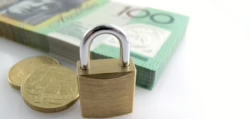
Emergency money. Enough cash in times of trouble. However you describe such money, there’s a lot to consider about the way you manage this aspect of your finances.
Low interest rates are dominating the headlines right now. This can lead to a questioning of how much money you hold in cash.
The current pandemic has also heightened the perception that ‘things might run out’ and this has exacerbated our thoughts of how much we need stashed away in ‘emergency money’ at any given time.
There are no simple rules about emergency money. The amount will vary from household to household.
But many people can dramatically underestimate the funds they can already access, if need be, without keeping high cash account balances.
The following is a short summary of just some of the ways you might get your hands on extra funds if necessary.
The Age Pension
By age 67 about 70% of Australian retirees are on a full or part Age Pension. By age 80, this has risen to about 80%. This makes the Age Pension the most critical pillar of retirement income. And the best part is that this is a dependable, secure fortnightly payment. Regardless of what else is happening, the federal government is contracted to pay your entitlement, plus supplements.
In addition to your scheduled fortnightly payment, there are other ways that those on an Age Pension can access their money early, should you need to do so. Find out more from our consultants.
Pension Loans Scheme
This is essentially a form of reverse mortgage but rather than getting the loan from a financial institution the loan arrangement is managed and guaranteed by the federal government, which allows a type of equity access on your residential property. Amounts are paid either fortnightly, or more recently, they are available in twice-yearly lump sums. There are rules and requirements on participants eligibility. Read the full detail here.
Non-super Investments
There’s a myriad of different types of financial products which sit in this category. Some investments can be accessed without prior notice (i.e. cash accounts), others may require days, weeks, months, or in some cases, even years of notice to withdraw your investment without a penalty. The point here is that you need to be fully aware of the withdrawal terms and conditions attached to each and any type of investment before you commit.
Account-Based Pensions
Often held within your super fund, account based pensions can also provide a regular income stream. In addition lump sums are generally available within 5-14 working days, and generally able to be withdrawn without penalty, depending of course, upon your superannuation status. Super funds which in your Account Based Pension ‘bucket’ are also generally available for timely withdrawal.
Accessing any of the above sources of cash requires careful consideration in order to avoid unexpected penalties, reduction of your Age Pension entitlement, or being left with insufficient capital to continue to draw your expected regular income payments.
The critical point when it comes to a discussion of whether you need to hold high cash reserves ‘for a rainy day’, is that, given the current Reserve Bank official cash rate of 0.1%, you will earn very little on money invested in a cash account. Your monthly fees may even outstrip your interest. So it remains important to keep just enough cash at hand, after a review of all of the above extra ways you might get money.
The questions to consider are:
- Which forms of funds you can access
- How much you could expect to be able to access
- How quickly you could expect to receive these funds
Knowing the answers to these questions will help you clarify how much cash on hand you actually need. Which could result in freeing up extra funds to invest at a higher rate, boosting your overall retirement income.
Juggling your retirement income portfolio is never easy.
That’s why looking at the widest range of options possible and consulting an experienced adviser to check which balance of cash, private investment, super and Age Pension is usually the best strategy of all. And it always helps to ensure you are getting all of your entitlements from the Government. You can check your age pension entitlements here.
This article is provided by Retirement Essentials Representative Number: 001260855. We are an authorised representative of SuperEd Pty Ltd ABN 88 118 480 907 AFSL #468859. This information is not intended as financial product advice, legal advice or taxation advice. It does not take into account your personal situation, goals or needs and you should assess your own financial situation, consider if the information is suitable for you and ensure you read the relevant Product Disclosure Statement (PDS) if you choose to make any changes to your financial situation. It is always advisable to consult a financial adviser before making financial decisions.






Another form of cash is redrawing on a house load. I have an account-based (allocated) pension, part-aged pension and a CSS pension (indexed for life). I also have and a house loan that has been paid off but still open so I can use redraw.
If I need cash I can afford to borrow the money because I have the capacity to repay the loan quickly and interest rates are very low. If I need cash and withdraw from my account-based pension I can’t put the money back whereas, because of very low-interest rates, it is cost-effective to redraw on my house loan.
Spot on Thomas
The cost of withdrawing from your account based pension is (say) 8% per annum (the income foregone by having a lower balance). The cost of drawing down on a home loan could be only 2%.
This is effectively a reverse mortgage but at a much lower rate. You can repay the loan from your acount based pension at a time of your choosing (or simply leave it as an offset against the value of your home in your estate.
I have always been curious why this strategy is not more commonly adopted
I agree with both Kyle and Thomas. A fully paid off home loan or line of credit (with a debt of for example $50 to keep the account open) is a very inexpensive way to maintain a reserve of money that is instantly accessible if needed. My fortnightly mortgage payment is $2.00 and even that is still available to me as a redraw.